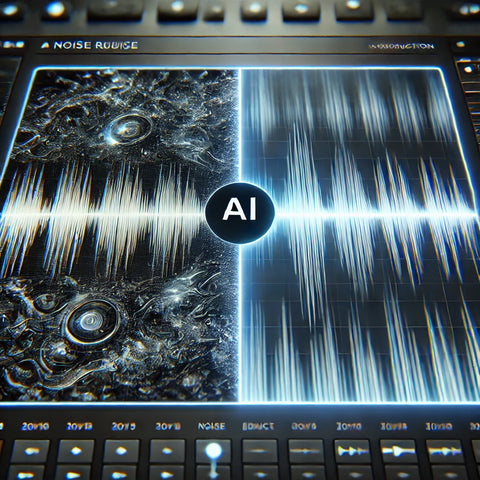
How AI is Changing Video Editing: Faster, Smarter, and More Efficient
Share
How AI is Changing Video Editing: Faster, Smarter, and More Efficient
In recent years, the rise of artificial intelligence (AI) has been reshaping many industries, and the video editing space is no exception. Video editors, both professional and amateur, are increasingly relying on AI to streamline workflows, enhance creativity, and even handle tasks that once required hours of manual work. AI is rapidly transforming video editing into a faster, smarter, and more efficient process, offering new opportunities for content creators to push the boundaries of storytelling.
1. Speeding Up the Editing Process
One of the most noticeable impacts of AI in video editing is the significant reduction in editing time. Traditional editing often involves tedious and repetitive tasks, such as sorting through hours of footage, cutting clips, and organizing sequences. AI-powered tools now automate these processes, allowing editors to focus more on the creative aspects.
For example, Adobe’s Sensei AI can analyze footage, automatically find the best moments, and help with scene transitions. Other tools like Magisto and Lumen5 simplify the process for users by using AI to transform raw video content into fully edited pieces in a matter of minutes.
2. Enhancing Creativity with AI Tools
AI isn’t just about automation—it’s also enabling new forms of creativity in video editing. AI-powered color grading, for instance, allows editors to achieve the perfect look and feel for a video based on advanced machine learning algorithms. Tools like DaVinci Resolve leverage AI to automatically adjust colors and lighting to match specific moods or aesthetics.
In addition, AI can now handle tasks like creating motion graphics, tracking objects within a frame, and even designing special effects that were once the domain of high-end professionals. By taking on these complex processes, AI enables creators to experiment with visuals and effects they may not have had the time or expertise to execute manually.

3. AI in Audio Enhancement and Synchronization
Apart from video, AI is also transforming audio editing. Clean, crisp sound is essential to a professional-quality video, but achieving perfect audio synchronization and noise reduction can be time-consuming. AI tools like Descript can automatically transcribe audio and video, making it easier to sync voiceovers with footage, while AI-powered noise reduction tools such as Auphonic remove unwanted background noise with impressive accuracy.
This also applies to music selection, where platforms like Mubert use AI to generate personalized soundtracks based on the mood or tone of the video. This seamless integration of AI in both video and audio editing ensures that creators can focus on delivering cohesive and immersive content.

4. AI-Powered Automation in Post-Production
AI’s ability to automate repetitive tasks doesn’t just stop at editing—it extends into post-production as well. Tools such as Runway ML offer features like automatic rotoscoping, where AI can instantly isolate objects or people from the background, a task that used to take hours or even days. Similarly, AI-driven facial recognition can quickly tag and organize video files, making it easier to search and manage large projects.
Another breakthrough is AI-powered upscaling, where low-resolution footage can be enhanced to 4K or higher, as seen in Topaz Video AI. These innovations are speeding up the entire post-production workflow, making it easier for content creators to meet tight deadlines while maintaining high quality.

5. Personalization and Audience Engagement
Perhaps one of the most exciting applications of AI in video editing is the ability to personalize content based on audience preferences. AI can analyze viewer behavior and adjust video formats, lengths, and even content styles to match the preferences of specific demographics.
Social media platforms, for instance, often use AI to automatically suggest the best thumbnails or clip lengths for maximum engagement. Some companies are even experimenting with real-time video personalization, where the content dynamically changes based on viewer feedback or location.

6. The Future of AI in Video Editing
While AI has already made significant strides in video editing, we are still only scratching the surface of its potential. As AI continues to evolve, we can expect even more advanced tools that will further reduce the time and effort required for high-quality video production. AI-driven storytelling, where algorithms help generate or suggest plotlines and character development, is one such area that is being explored.
Furthermore, as AI becomes more accessible to creators of all skill levels, we can expect to see an explosion of new content styles and formats that were once impossible to achieve without large teams and significant budgets.
Artificial intelligence is revolutionizing video editing by making it faster, smarter, and more efficient than ever before. From automating mundane tasks to opening up new creative possibilities, AI is empowering content creators to push the limits of what’s possible in post-production. As AI technology continues to advance, the future of video editing will be more dynamic, personalized, and accessible, offering endless possibilities for storytelling and innovation.



